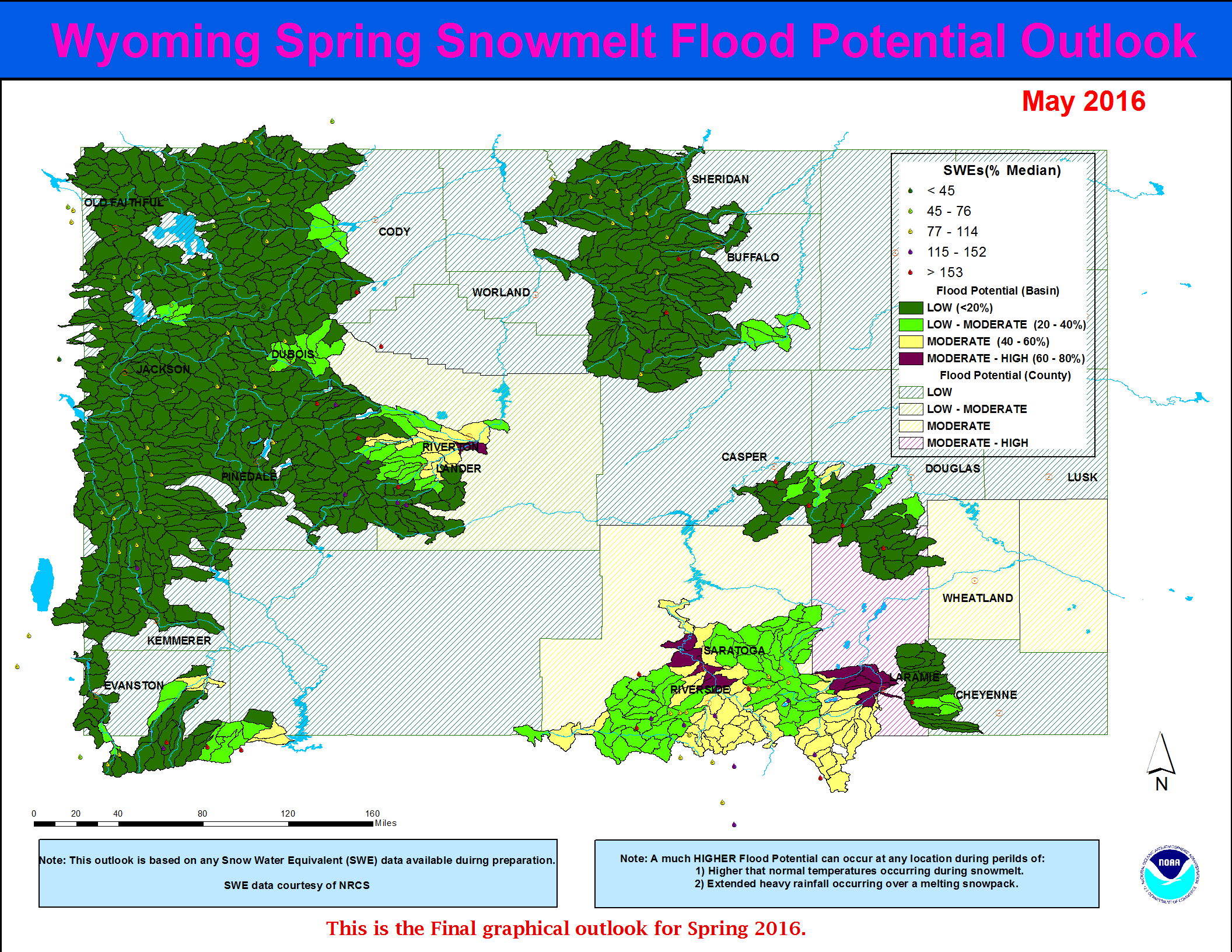
High winds and very dry conditions will bring extremely critical fire weather over a large part of New Mexico today. Red Flag and High Wind Warnings have been issued. Isolated to scattered severe thunderstorms may produce large to very large hail and localized damaging winds late this afternoon into evening from the eastern Central Plains to the Upper Midwest. Read More >
Mountain snowpack and associated snow water equivalents (SWEs) across central through northwestern Wyoming were generally above to much above average by late March; while SWEs across basins in southern Wyoming continued to be generally below average. SWEs at the peak snowmelt runoff elevations (8,500’ – 10.000’) were the highest across the Shoshone and Upper Yellowstone Basins at 150 to 160 percent of median. The Upper Bear and Little Snake Drainages had SWEs at 75 to near 85 percent of median at the peak snowmelt runoff elevations.
This outlook is based on various diverse hydrological factors such as snow water equivalents (SWEs) in the mountain snowpack, basin morphology (i.e. how basins respond to snowmelt runoff), antecedent soil moisture, biological factors (bark beetle kill/spruce blight), low elevation snow depths, and likely temperature and precipitation trends during late spring/early summer.
…Moderate to High potential for flooding associated with snowmelt runoff is expected across extreme lower portions of the Big Wind Watershed , over upper sections of the South Fork of the Shoshone Watershed, and along headwater creeks and streams along the west side of the Big Horn Mountains…
…Moderate potential for snowmelt runoff flooding is forecasted across the middle to lower portions of the North/South Forks of the Shoshone Basin, upper to middle sections of the Big Wind Watershed, and along headwater streams in the upper Snake River Basin…
…All other of headwater basins across Wyoming can expect a generally Low potential for flooding due to springtime snowmelt runoff...
The next outlook will be issued in late April.
Other hydrological information for Wyoming can be found at the NOAA hydrology website:
http://www.weather.gov/riw/local_hydrology
Monthly Wyoming Hydrologic Summary and Graphics:
(updated monthly around the 15th of every month)
http://www.weather.gov/media/riw/hydro/hydro_report.pdf
Wyoming Drought Information Page:
(updated at least once a month)
http://www.weather.gov/riw/drought
Wyoming Graphical Water Supply Outlook:
(updated by the 10th of every month—January-June)
http://www.weather.gov/images/riw/hydro/watersupply.png
Wyoming Average Precipitation by Basin:
(updated monthly)
http://www.weather.gov/images/riw/hydro/wyomingprecip.png
Wyoming Spring Snowmelt Runoff Flood Potential Graphic:
(updated around the 20th of the month---February-May)
http://www.weather.gov/images/riw/hydro/floodoutlook.png
Current and Forecast Wyoming Streamflows and/or River Stages:
http://water.weather.gov/ahps2/index.php?wfo=RIW
http://water.weather.gov/ahps2/index.php?wfo=CYS
http://waterdata.usgs.gov/wy/nwis/rt
The current Wyoming Spring 2018 Snowmelt Runoff Flood Potential Outlook:
